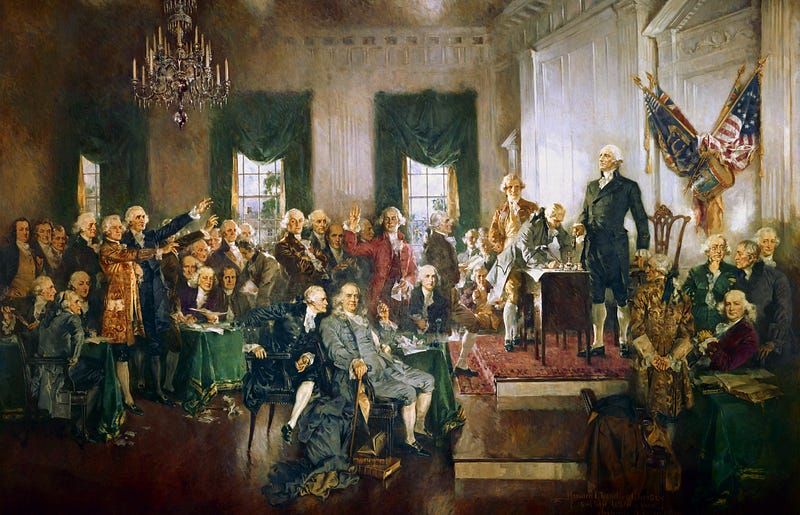A Discussion of Oliver DeMille’s 1913 Chapter 1 “The Turning Point of Freedom”
We know we have a much larger federal government than was originally designed by the framers of the U.S. Constitution, but how did that happen? Is it a natural result of growth in population or technology?
Oliver DeMille offers a reason, 1913, “the year that changed everything.” (p. 11)
Specifically, there were two Constitutional Amendments passed that year and one Act that fundamentally transformed the relationship of the federal government to the states.
- The Sixteenth Amendment (federal income tax)
- The Seventeenth Amendment (direct election of US Senators)
- The Federal Reserve Act
And there was one more, a fourth “world-shifting event” in 1936 with a Supreme Court ruling in United States v. Butler that cemented the transformation.
The Original Turning Points
DeMille asserts that prior to the above four events, the founding of the US was similarly due to four turning point events. (p. 20)
- The Boston Tea Party leads to the American Revolution and its concern about taxation will help us understand how the sixteenth amendment undid much of what the founders originally intended.
- The Declaration of Independence in 1776 set the tone for the first county intending to hold to the idea that “all men are created equal.”
- The US Constitution replaced the Articles of Confederation in 1789 and “created a new nation and gave it the strength to grow and flourish in an environment of freedom and widespread prosperity.” (p. 20)
- And much like the 1913 events, the fourth one occurs several decades later. In this case, DeMille is referring to the Monroe Doctrine that let Europe know the Western hemisphere was closed to any further colonization.
Together, DeMille says these four events shaped over 100 years of the U.S. early history.
Without these four turning point events, the history of America and the entire world would be very different. For nearly a century, these four events helped shape the development of America and the ideas of freedom, free enterprise, and widespread prosperity. (p. 21)
Previously, I did a chapter by chapter review that focused on the source of that prosperity according to Dr. Dierdre McCloskey, and the environment that the founders created helped the Great Enrichment flourish in the US.
The 1913 Turning Points
DeMille calls these three 1913 turning points listed at the top of the article the “Turning Point of Freedom” because “…any of the three alone would have been a drastic blow to freedom. But together, the result was a disaster.” (p. 21)
The founders had created a “great freedom model” that
…unleashed liberty on a growing populace and allowed them to use free enterprise to create the most wealthy and powerful nation in history. (p. 21)
Fortunately, this model was strong enough to allow corrections to its original weaknesses so that freedom could be expanded to include women and all races. (p. 22)
This model created the American Dream, an environment of freedom and opportunity with the ability to build wealth spread across to people at every economic level.
However, DeMille says that this system was hijacked by the turning points of 1913, and while it did not immediately stop the growth of the U.S. it did plant the “seeds of decline” that have grown into quite the forest by our time.
In our post-9/11 world, the weakening of the American Dream is a reality seen and felt by everyone. Nearly all Americans now sense something is wrong, that changes are needed, and that Washington can’t (or won’t) fix it. People put renewed hope in each election, but they are routinely disappointed after the elections are over. (p. 23)
DeMille was writing in 2012 but that sentiment is still true today. He cited a CNN Opinion Research Poll from 2010 when 56% of Americans said the federal government was a threat to our rights and freedoms.
Whether you are on the Left and see it as a threat to abortion and gay marriage, or the Right and see it as a threat to the free practice of religion and gun rights, or the Libertarians who see taxes as theft, concerns about the government span the political spectrum.
To answer the question, DeMille says, of where did we go wrong requires us to go back to 1913.
We start in the next blog looking at the Sixteenth Amendment and its impact.
Reference: DeMille, Oliver, 2012. “The Turning Point of Freedom” Chapter 1 of 1913, Obstacles Press, Inc., Flint, Michigan.




